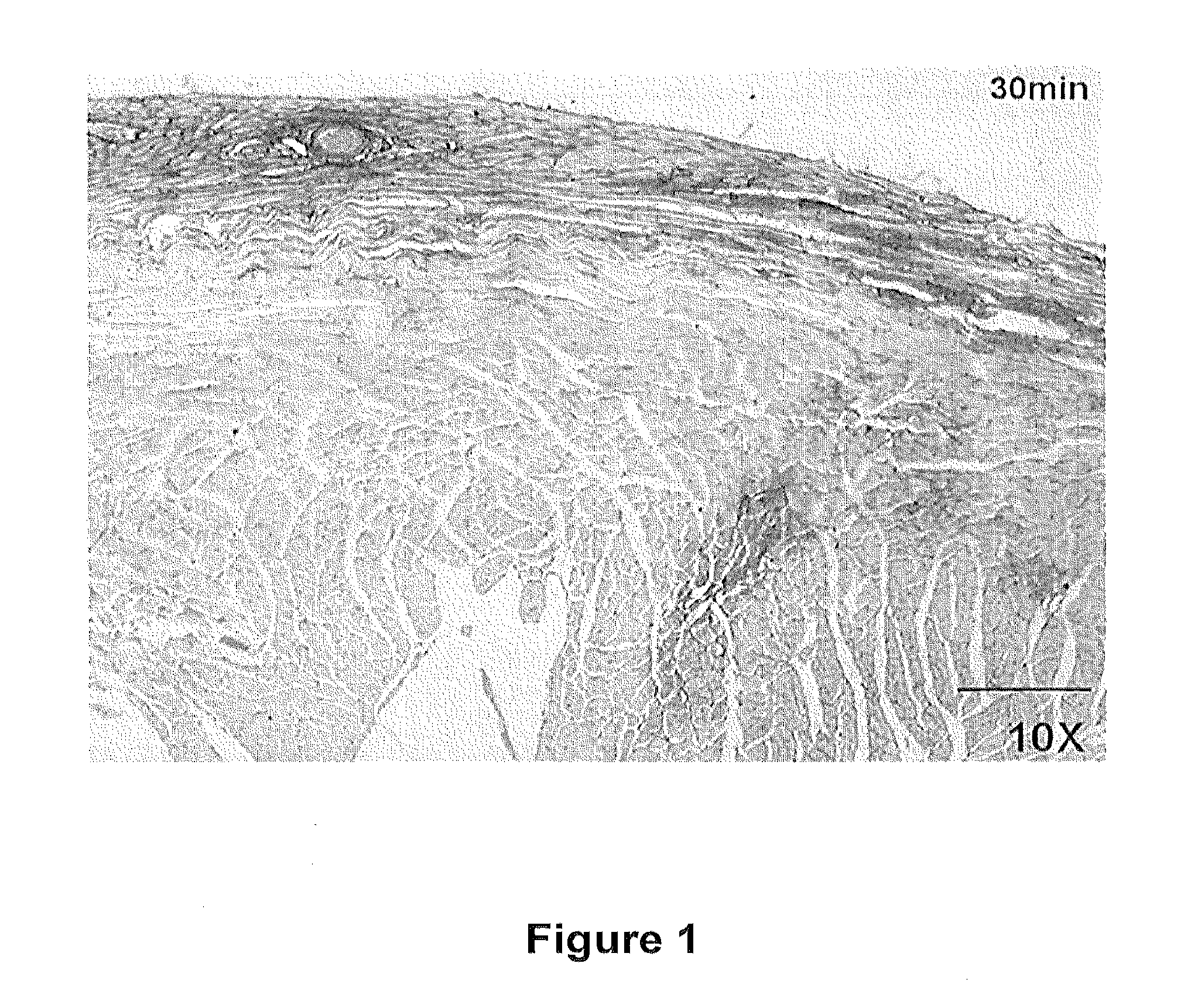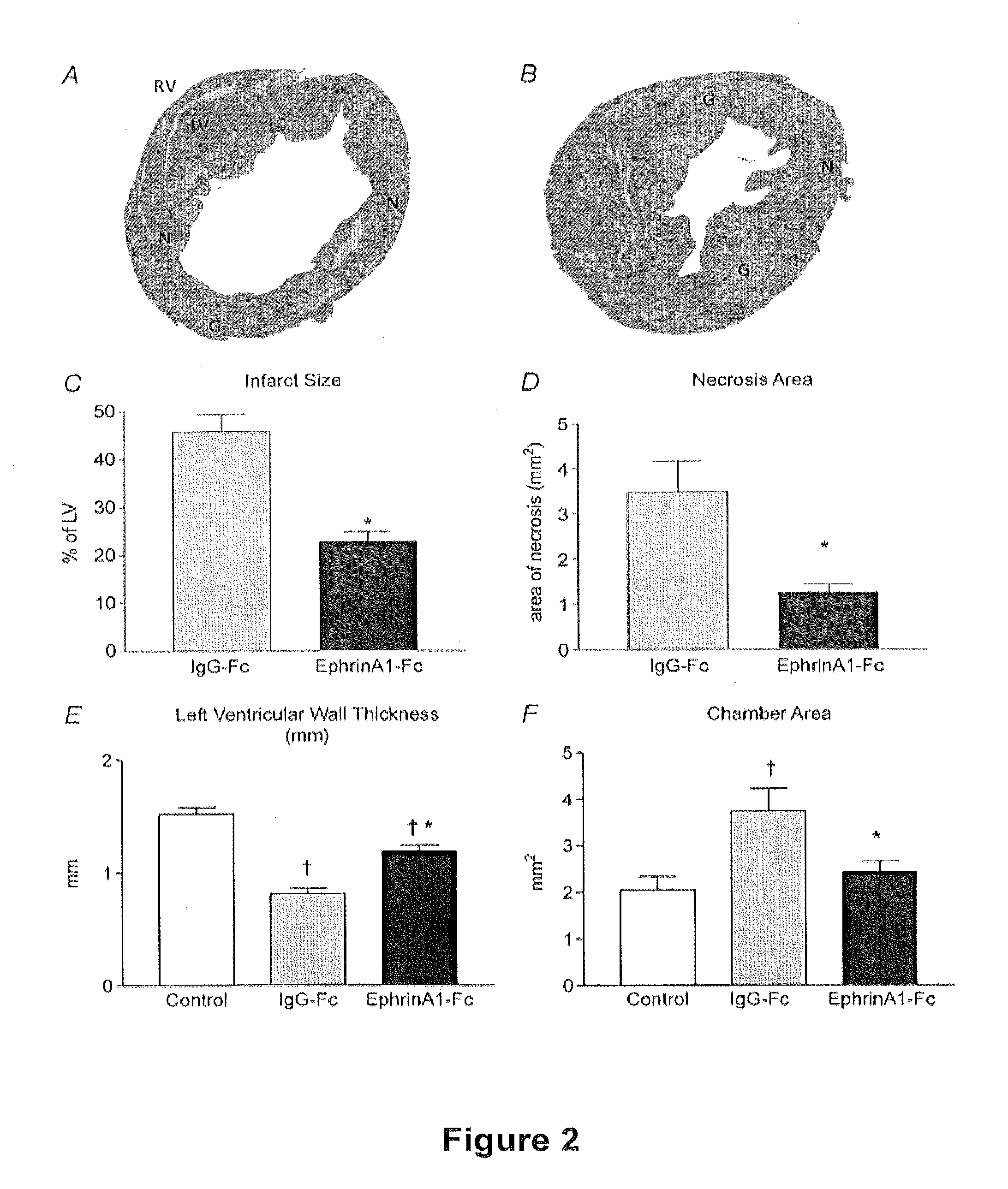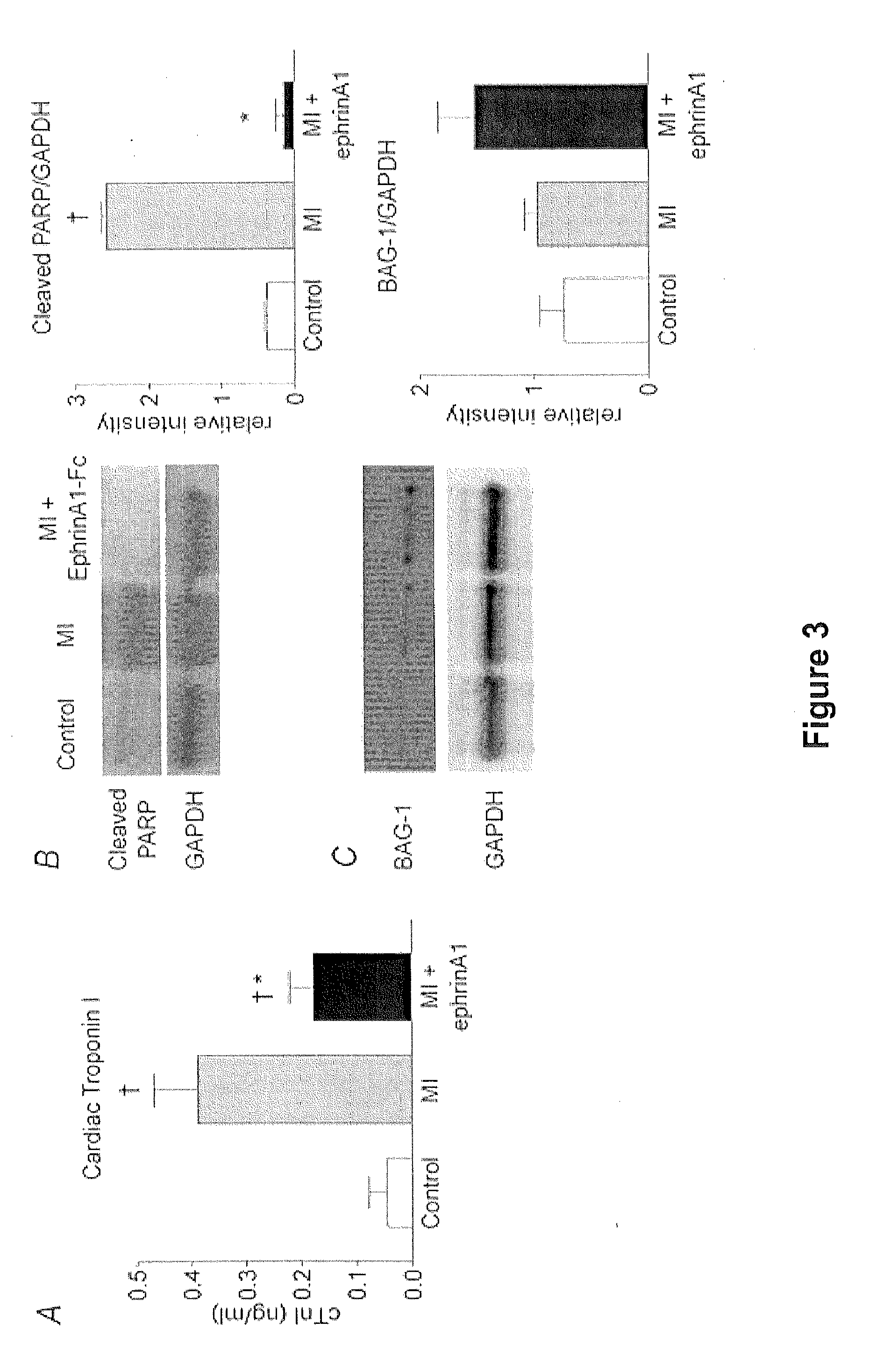Methods of Reducing Myocardial Injury Following Myocardial Infarction
- Summary
- Abstract
- Description
- Claims
- Application Information
AI Technical Summary
Benefits of technology
Problems solved by technology
Method used
Image
Examples
example 1
Methods
[0078]All procedures were approved by the East Carolina University Institutional Animal Care and Use Committee and the investigation conforms to the Guide for the Care and Use of Laboratory Animals published by the US National Institutes of Health (NIH Publication No. 85-23, revised 1996).
Animals
[0079]Six week old B6 / 1295 breeder pairs were obtained from Jackson Laboratories (Bar Harbor, Maine) to establish an in-house colony (strain #101045). Animals were housed in 12-12 light / dark cycle conditions and received food and water ad libitum.
Surgical Procedure
[0080]Male 8-10 week old mice (22-28g) were anesthetized (20 μl / g Avertin i.p.), intubated, and mechanically ventilated. The left anterior descending (LAD) coronary artery was permanently ligated using 8-0 suture. Sham controls in which the suture was pulled through the heart but not ligated, and either IgG-Fc or ephrinA1-Fc was injected, were done to ensure that there was no injury caused by the injection (data not shown). ...
example 2
[0091]EphrinA1-Fc Reduces Infarct Size, Necrosis, Chamber Dilation, and Left Ventricular Free Wall Thinning
[0092]EphrinA1-Fc or IgG-Fc was injected into the border zone of the infarct immediately after coronary ligation. Four days after surgery, tissue was collected and either fixed for histology and immunohistochemistry, or frozen for RNA and protein isolation. Overall survival for this study was 70%, and there was no difference in survival between experimental groups. Histological staining and morphometric analyses (FIG. 2) show a 50% reduction in the size of the infarct (expressed as a percent of the left ventricle), 64% less necrotic area, a 35% reduction in chamber dilation, and 32% less thinning of the infarcted left ventricular free wall. There was no significant difference in chamber area between uninjured control hearts and those treated with ephrinA1-Fc at day 4 post-MI.
example 3
[0093]Cardiac Troponin I Levels Reduced with ephrinA1-Fc Administration
[0094]Serum cTnI levels were measured prior to surgery and at the time of euthanasia (four days post-MI) in the same animals. There was an 89% increase in cTnI levels following MI in vehicle treated hearts. However, cTnI levels in ephrinA1-Fc treated hearts were 54% lower than those from vehicle treated animals (FIG. 3A). There was no significant difference between pre-surgery levels and those of ephrinA1-Fc treated animals four days post-surgery.
PUM
| Property | Measurement | Unit |
|---|---|---|
| Time | aaaaa | aaaaa |
| Time | aaaaa | aaaaa |
| Composition | aaaaa | aaaaa |
Abstract
Description
Claims
Application Information
 Login to View More
Login to View More - R&D
- Intellectual Property
- Life Sciences
- Materials
- Tech Scout
- Unparalleled Data Quality
- Higher Quality Content
- 60% Fewer Hallucinations
Browse by: Latest US Patents, China's latest patents, Technical Efficacy Thesaurus, Application Domain, Technology Topic, Popular Technical Reports.
© 2025 PatSnap. All rights reserved.Legal|Privacy policy|Modern Slavery Act Transparency Statement|Sitemap|About US| Contact US: help@patsnap.com



